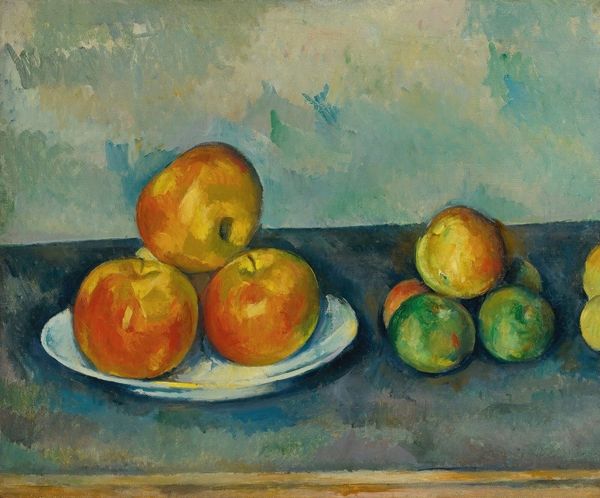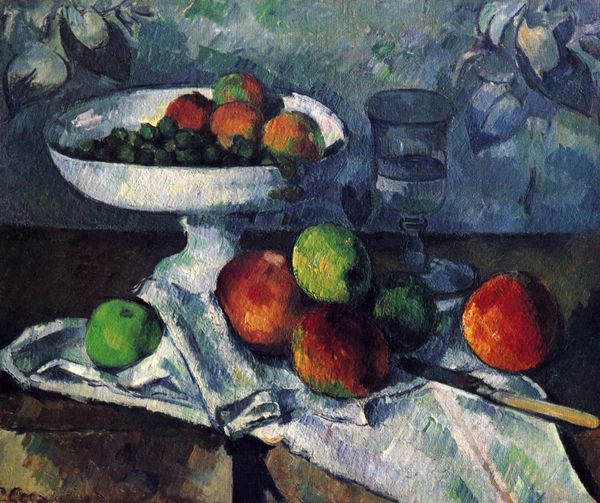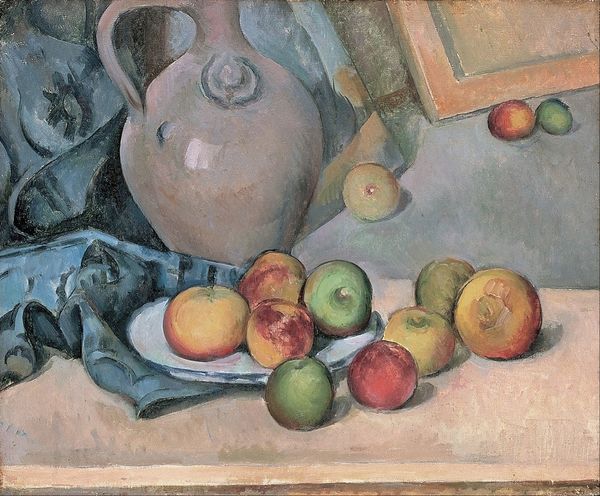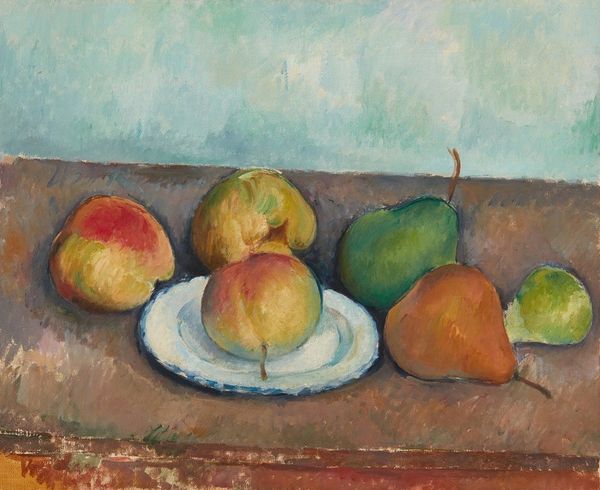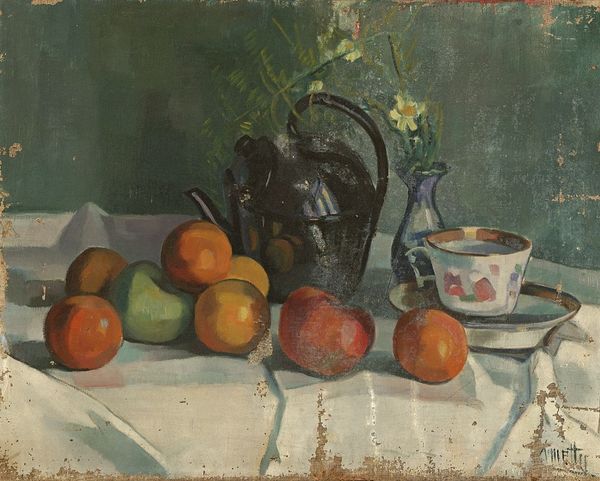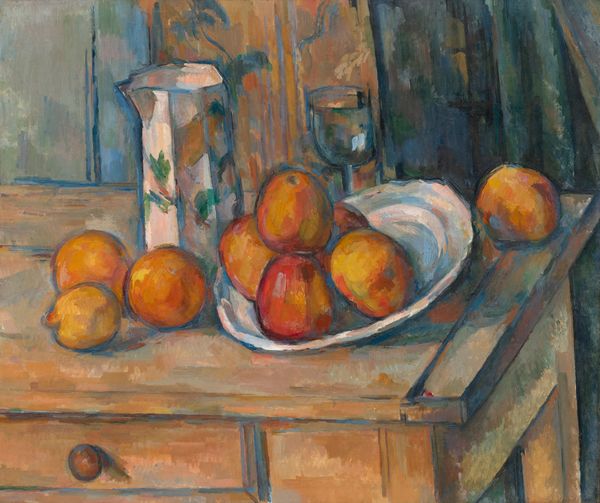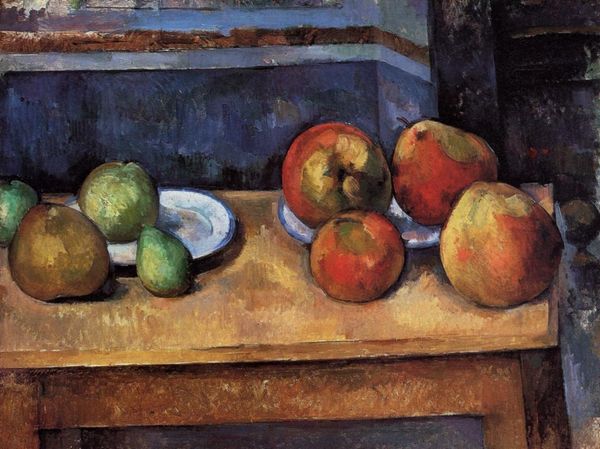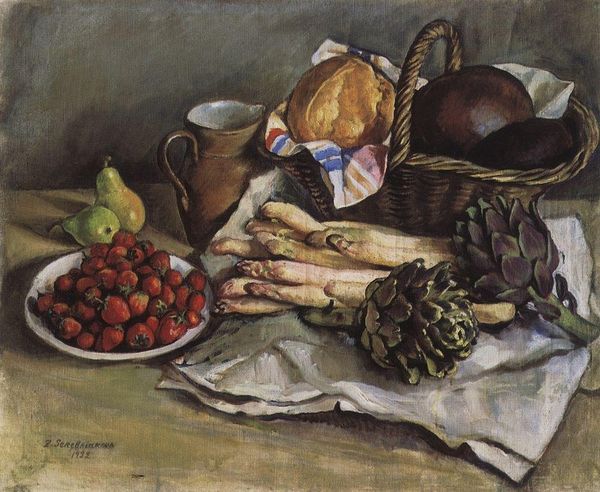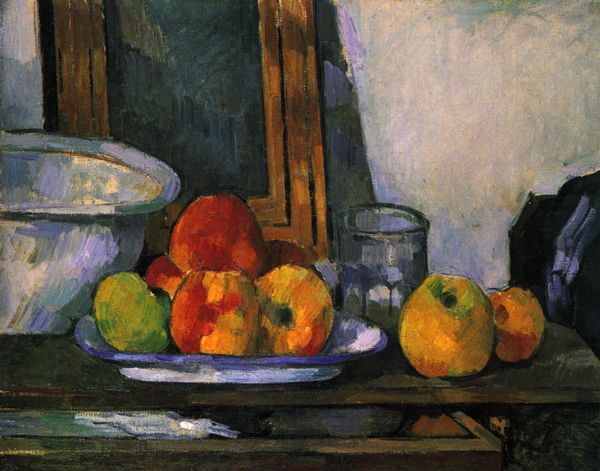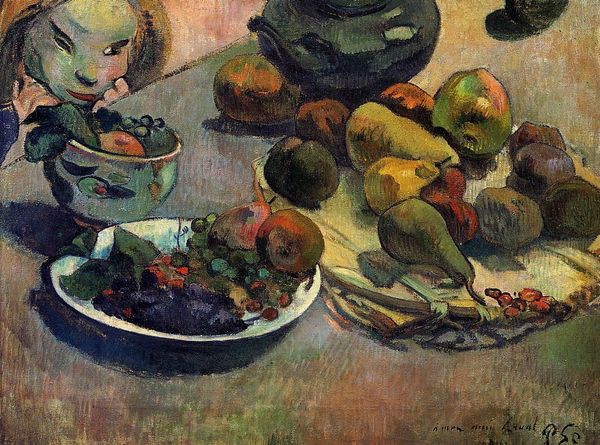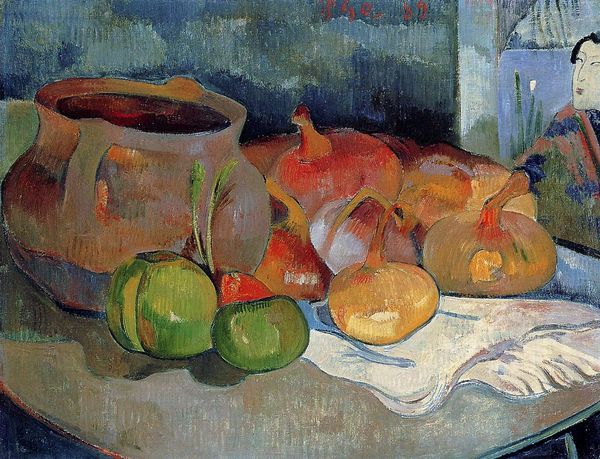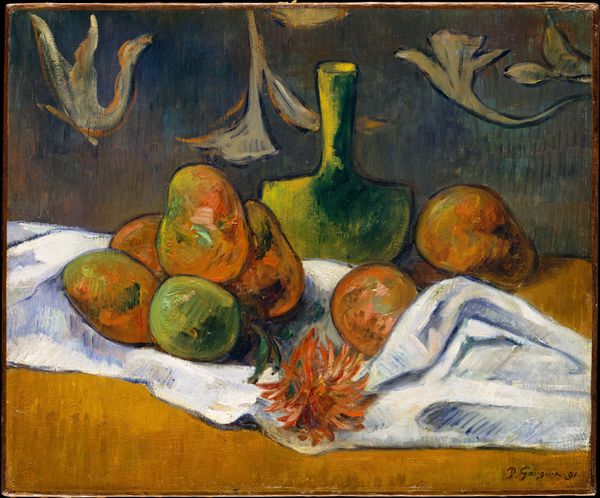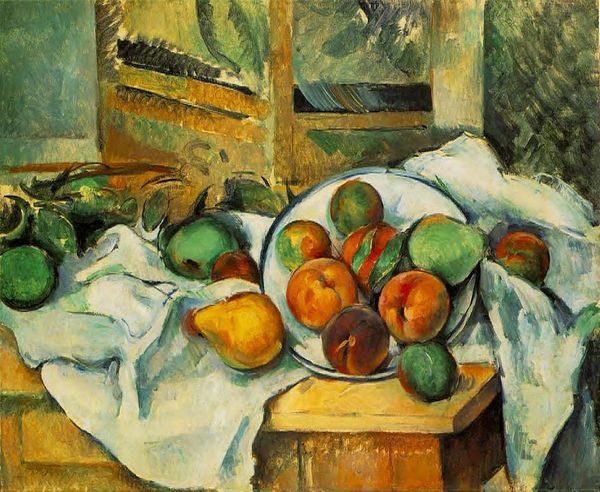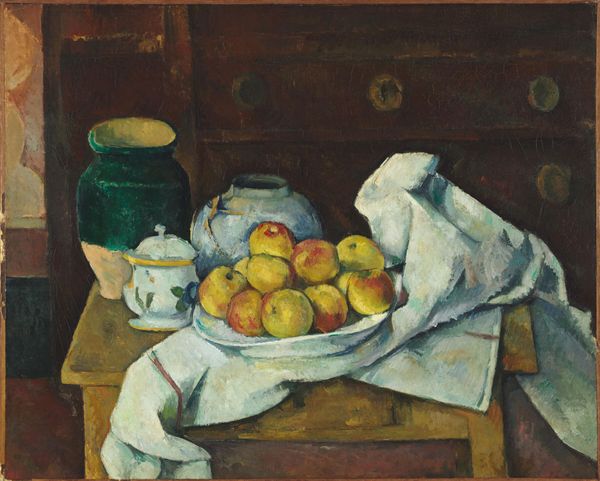
painting, oil-paint, impasto
#
still-life
#
gouache
#
painting
#
oil-paint
#
oil painting
#
impasto
#
post-impressionism
#
watercolor
Copyright: Public domain
Curator: Here we have Meijer de Haan's “Still life with a profile of Mimi,” created around 1890. De Haan, a Post-Impressionist, employed oil paint with a definite impasto technique here. The artwork is currently housed in the Van Gogh Museum. What catches your eye immediately about this work? Editor: It's somber, isn't it? Not your typical bright and cheerful still life. There is a muted palette; the blue tablecloth almost seems to be radiating melancholy. There's a figure, too, off to the right. Who is that? Curator: It's believed to be Mimi, a young woman the artist likely knew from Pont-Aven. Now, consider how the artist uses thick applications of oil paint, notably in rendering the fruit. There is a physicality, a raw presence to those apples and tomatoes, as if pulled directly from the earth. Think about where De Haan was at the time—what available materials was he using and where did they come from? Editor: Exactly. It places this seemingly simple scene into a network of production and social relations. De Haan's time in Brittany with Gauguin also informs this work; it moves away from academic painting towards something more symbolic. I am especially curious about Mimi's downcast face: what did this young woman signify to the artist, to the community? Was it a celebration or a contemplation of youth and femininity? What kind of expectations was placed upon the young? Curator: That context shapes everything. And the profile of Mimi isn't just casually placed. It is part of a carefully constructed tableau. Consider, too, the texture created through the application of paint, transforming the simple elements into weighty objects. We feel their mass, their origin, perhaps. The table's almost harsh angularity suggests the hard labor, that provided that produce. Editor: Yes, this is more than just food displayed on a table; the artist is, perhaps unconsciously, pointing to larger systems— labor, commerce, the realities of rural life. Curator: Exactly. The interplay of forms and textures provides a tangible record of process, each brushstroke is evidence of an act. It shows the interaction between artist and subject and material, which leads us back to how art and craft were viewed in that time. Editor: It reframes what a still life could be, and forces us to confront not only what's on the surface, but the realities that shape our lives. Curator: Precisely. By looking at both technique and context, the work transcends simple representation and provides an understanding into art making, the art market, and cultural shifts of the period. Editor: A sobering, yet insightful tableau that quietly echoes the tensions and transformations of the time.
Comments
No comments
Be the first to comment and join the conversation on the ultimate creative platform.
